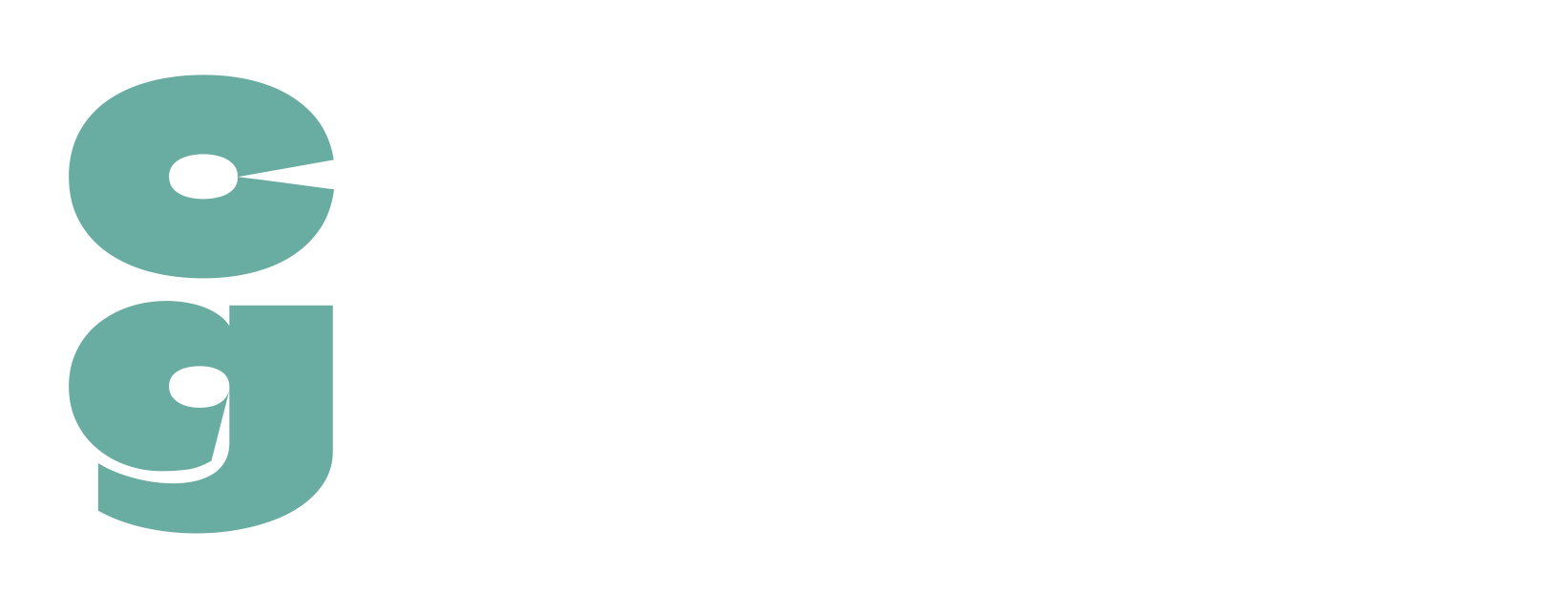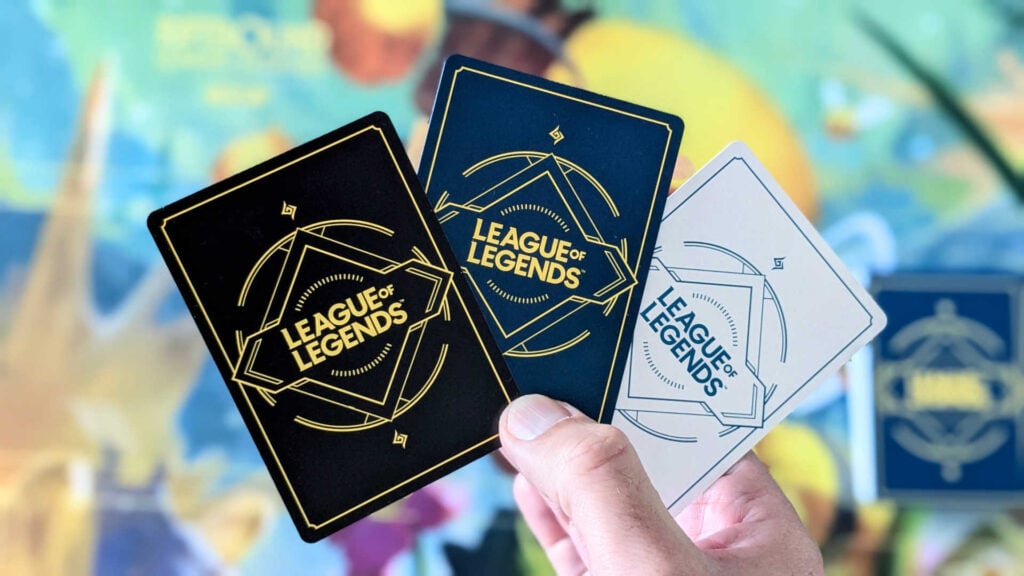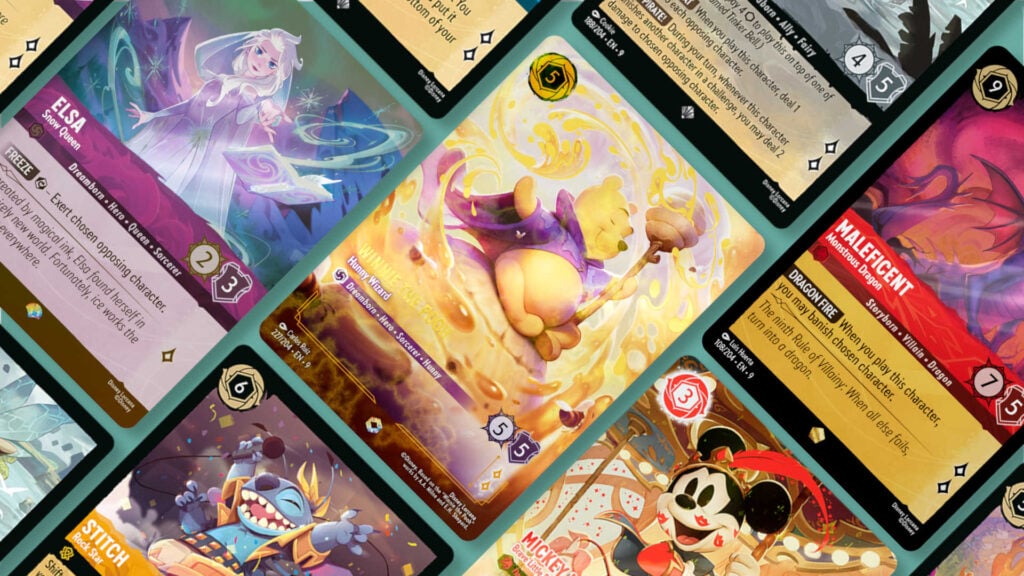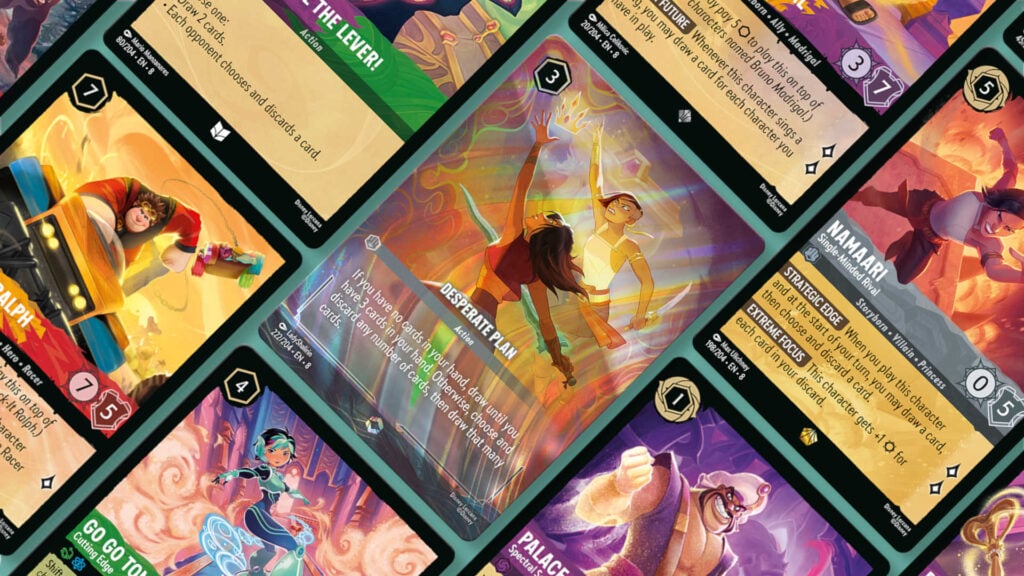If you’ve had a chance to take a look at Riftbound, the League of Legends Trading Card Game (or TCG), you’ll have seen that there are numerous types of card used during play. When building a deck, for example, you’ll need to have a Legend, their counterpart Champion unit, Battlefields and a Rune deck, along with the rest of your cards, which will comprise whatever units, spells and gear you want to include (following a 3-copies-per-deck limitation rule). When you’re first introduced to Riftbound decks, you’ll notice that there are several different card back colors, so what do they all mean? Let’s take a look!
Table of Contents
ToggleBlack Riftbound Card Backs

Featuring a black background and a yellow version of the overall card back design (interestingly, with the “League of Legends” branding, rather than “Riftbound”), the black card backs are found on the Legend (with Viktor shown above) and Battlefield cards (The Grand Plaza being the example in the above image). This makes it extremely intuitive to know which cards you’ll need to have in your play area at the beginning of the game; you, and your opponent(s), will have your Battlefields however, do note that the Champion unit you choose to begin the game with will have a different card back, and you may have other copies of this card in your main deck. Which brings us to the next card back color!
Blue Riftbound Card Backs

These are your main deck cards, where you’ll find your units, spells and gear. Your deck is built to take advantage of your Legend card, and it’s your Legend card’s two colors which determine the colors of the cards you can include in your main deck. In the case of the Viktor deck we’re using as an example, it’s a blue and yellow deck, so there will only be blue and yellow cards included with the blue card back.
White Riftbound Card Backs
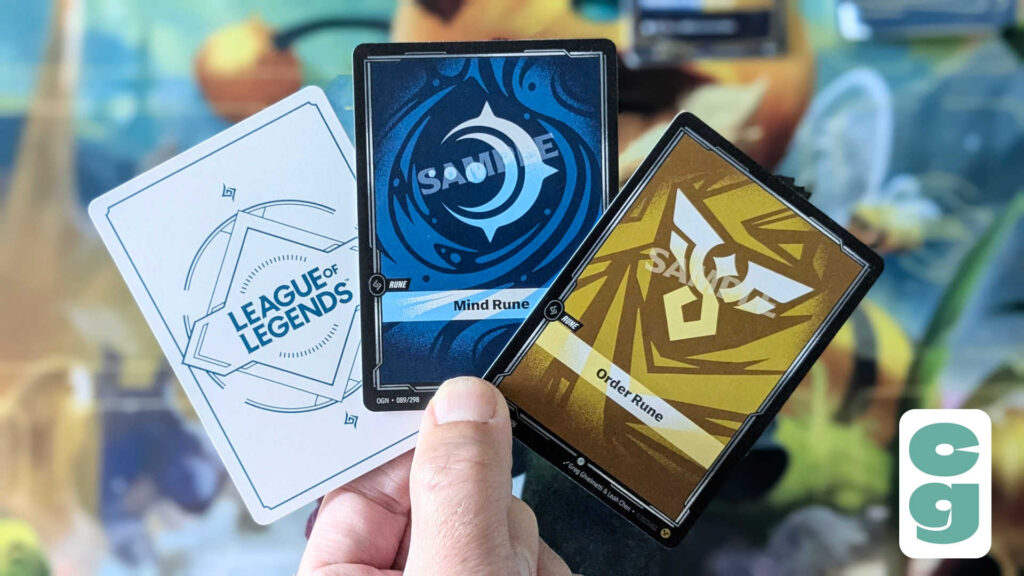
The Riftbound cards with white card backs are Runes; these are the game’s energy system. Though paying for cards in Riftbound works in much the same way as most other TCGs you can think of (turning your Rune cards sideways to pay the numbered cost of each card you want to play), your Rune deck itself is separate to your main deck. In a similar way to how the DON!! cards work in the One Piece Card Game, players will draw 2 Rune cards per turn from the deck to put into play. There’s also a ‘recycling’ mechanic which gives Riftbound’s Rune costs a distinct and somewhat risk-vs-reward element.
So there you have it; the three different card backs for Riftbound. Stay tuned for more details on the League of Legends Trading Card Game!
Though we don’t currently have much more we can share about Riftbound, how about checking out other titles based on series which were first seen in another medium? For example, take a look at our review of Slay the Spire: The Board Game, which is based on the popular, hugely influential digital deckbuilding game, or Adventure Time: Card Wars, which began as an episode of the cult cartoon show, before becoming both a digital and physical card game!
